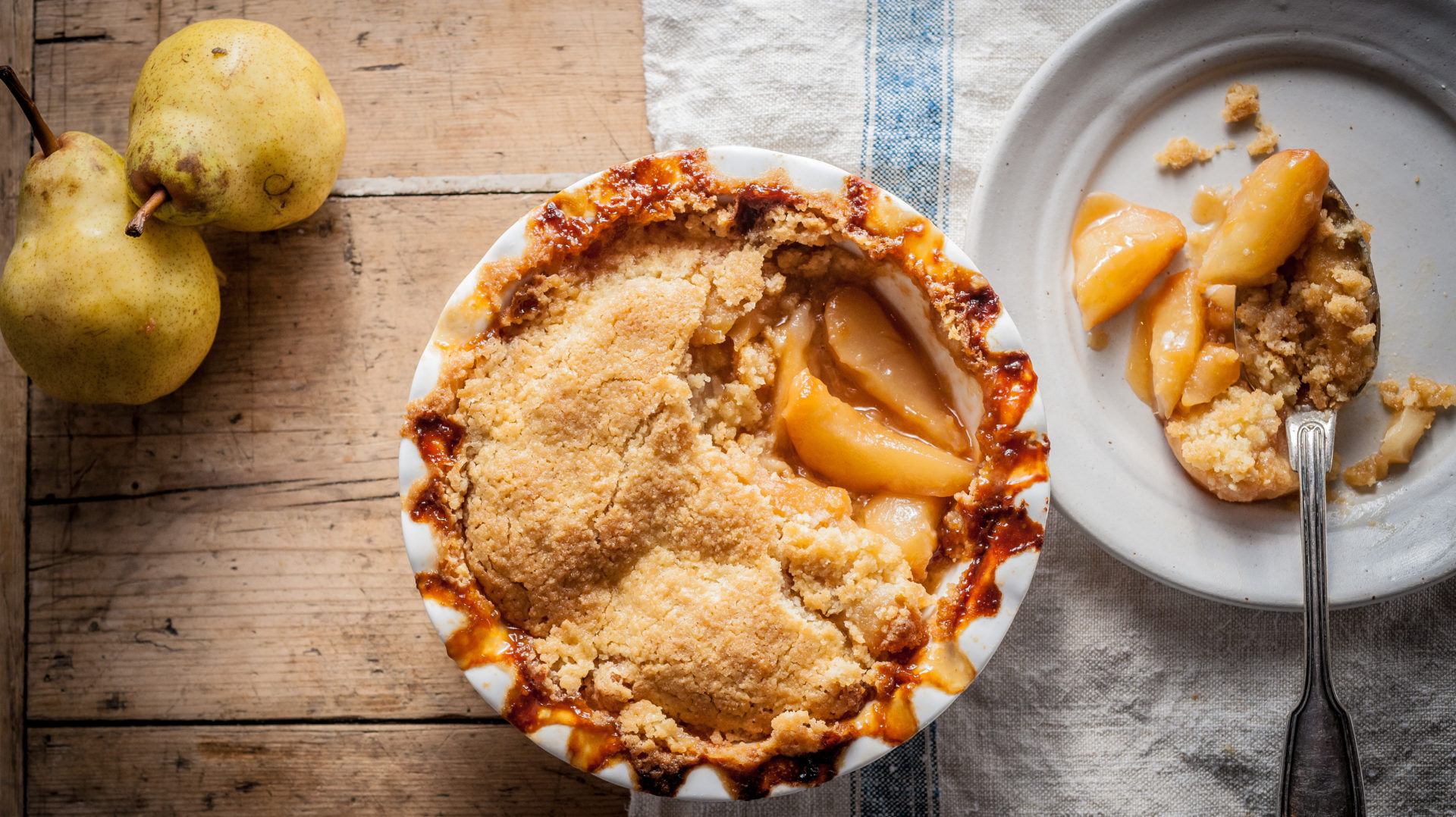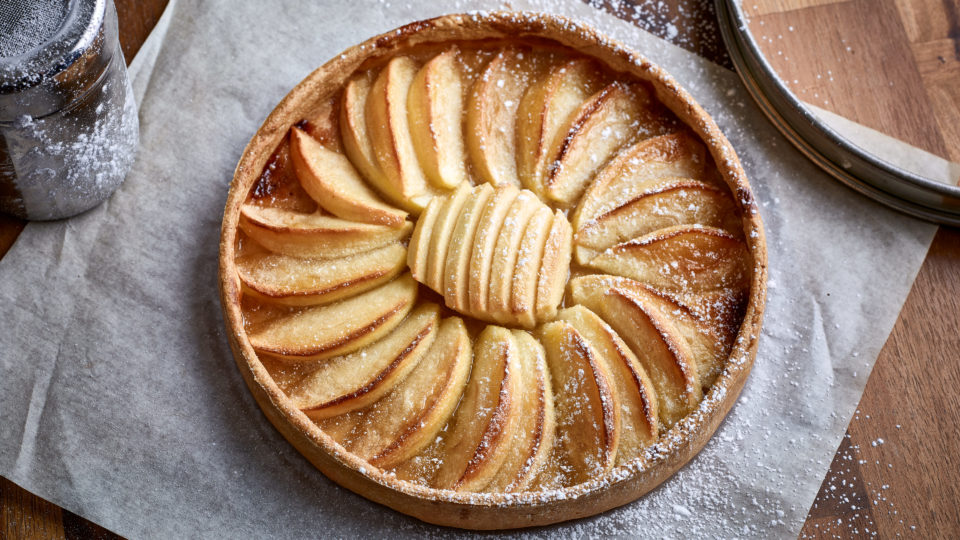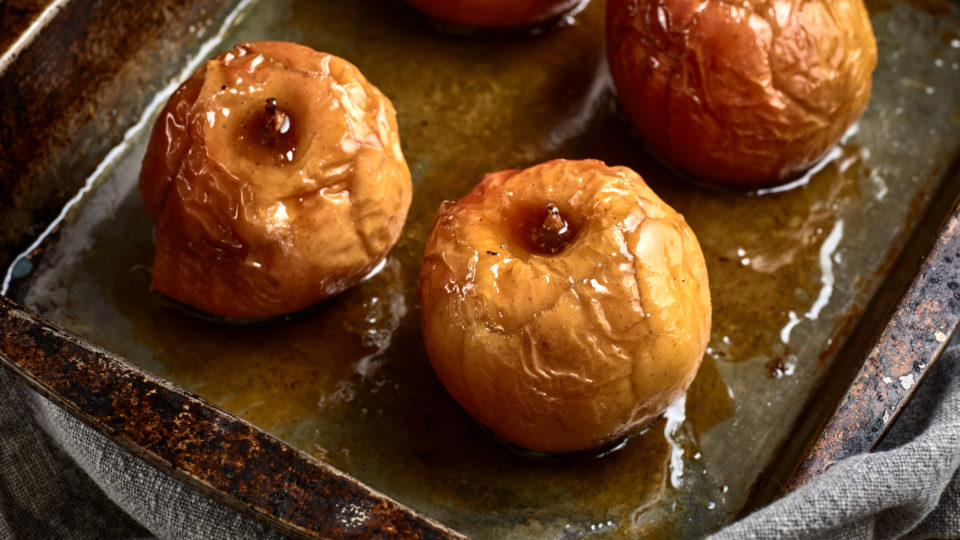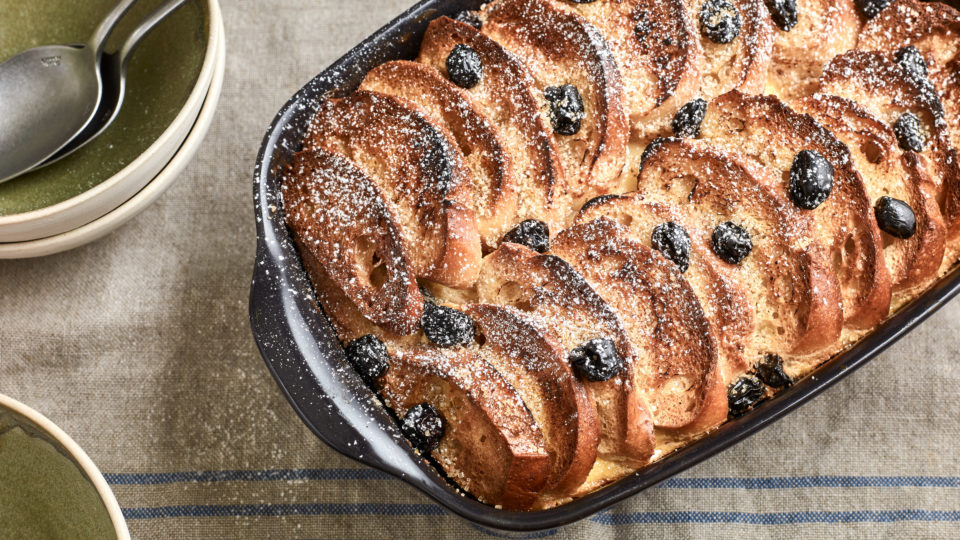
Pear and ginger crumble
A Great British classic
The origin of the British crumble dates back as far as World War II rationing when it was created as an economical alternative to a pastry crust. By comparison, it is only recently that the French have caught on to the joy of Le Crumble but it is fast becoming a firm favourite with us too. At Le Manoir aux Quat'Saisons, the gardening team and I have been working hard with experts to create our beautiful orchard full of heritage varieties of pears and apples that contribute to the most delicious crumbles you can imagine. But there are many other British fruits that work well in a crumble, such as rhubarb, peach, blackberry, gooseberry and plum.
Ingredients Required
For the crumble topping:
- 60g
- Butter, unsalted, cold, cut in to 2cm pieces
- 120g
- Plain flour
- 30g
- Caster sugar
- 30g
- Demerara sugar
For the pear and ginger compote
- 20g
- Water
- 80g
- Sugar, caster
- 60g
- Butter, unsalted
- 4
- Pears, ripe, cored, diced 2-3cm
- 5g
- Ginger, grated
Cooking Method

Chef tips
"Do not overwork the crumble; lift it with the tips of your fingers and rub it lightly between your hands. Do not try to compress the mixture as you will end up making a dough!"
"Traditionally, the crumble is added on to the top of the cooked filling and then baked. I have found that the steam generated by the fruit compote creates a stodgy, heavy topping with only the very top being crusty. It will also be indigestible as the flour is not cooked. The technique that I propose is to pre-cook the crumble and finish baking it off to a crusty, crumbly, dry finish."
"According to the variety of pears you are using, the cooking time will vary. You want a pear that has a relatively low sugar content that doesn’t break down too quickly."
"Pouring the cooled fruit into the gratin dish and topping with the crumble offers a number of advantages; 1) it will prevent the topping from becoming soggy as the steam rises from the fruit and 2) it enables the crumble to become even crunchier as the fruit reaches the perfect temperature. Hopefully, this will give you the perfect crumble experience."
Recipe © Raymond Blanc 2018
Food photography by David Griffen


